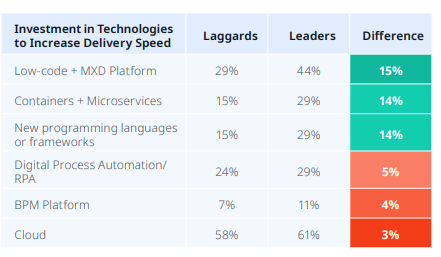Merging two companies: Top 3 technical challenges

What are the technical challenges of a merger and acquisition
Whether the motives for a merger or acquisition (M&A) are: increasing market share, economies of scale, buying a customer base, creating shareholder value, diversification, or acquiring assets, the technical challenges are the same.
Acquiring companies are often challenged with merging, consolidating, integrating, or automating.
-
Services
-
Data (product and customer)
-
Processes
-
Or legacy systems
It’s understandably difficult for organisations to know where to begin on their digital transformation journey.
A merger or acquisition will escalate a company’s level of urgency to accelerate its digital transformation ambitions, with a desire to transverse the business landscape with technical agility and efficiency. They require a strategy which supports growth and allows them to adapt as the market continues to change.
We’ve put together a handy guide built around the main causes of headaches organisations face during an M&A and how to help you overcome them.
Integration challenges
One of the biggest challenges businesses face when going through an M&A is the lack of integration between systems. Integrating data is often complex; companies have their own financial, HR & internal systems among others, the prospect of integrating two companies’ systems is somewhat daunting and urgent. The longer it takes to integrate these systems, the slower operations become, and the more money is spent fixing the problem.
Traditionally this needs a team with the technical know-how and the time to write custom code to get your integration up and running. Custom code, although incredibly flexible, can be time-consuming, which in turn reflects in the cost, both to deliver and for ongoing maintenance and support since it requires highly skilled developers.
But it doesn't always have to be this way, in many use cases there is another option. This blog will look at the option of Low-Code development in order to simplify the integration. Developers manage the configurations of integration without the need to write custom code, significantly reducing time and effort and eliminating errors.
High-Performance Low-Code (HPLC) Enterprise platforms have built-in capabilities and automation that significantly reduce the traditionally time-consuming effort it takes to integrate databases, business logic, systems, and software.
Low-Code development makes it possible for developers to focus on what matters most: creating well-engineered software, software which when following a Merger or Acquisitions will help keep the lights on and empower future transformations, supporting continued growth.
Low-Code integrations allow you to:
-
Integrate faster
-
Reuse integrations with governance
-
monitor performance with built-in logs
-
Centralise configuration management
-
Accelerate knowledge transfer
-
Build in security
When consolidating the platforms, services and data to secure the planned economies of scale.
Inefficient processes
Often companies struggle the find the perfect off-the-shelf solution, spending significant sums to make it fit their business while amounting to technical debt with quick workarounds. In some companies, ill-fitting software forces siloed department decisions, which then source development or solutions elsewhere, which in turn creates Shadow IT that often does not meet the broader organizational goals.
According to a recent survey of 2,200 IT professionals and senior IT leaders, only 21% of people feel like they can beat their peers and competitors in speed and agility. By accelerating the speed of development, organisations are able to launch solutions that cope with business needs much faster while still delivering value.
Modern approaches to architecture and Low-Code technology are gaining significant traction within the marketplace, due to their ability to facilitate rapid application development and therefore reduce time to value. This is how big tech and new digital disruptive thinkers became a formidable threat to less nimble, organisations.
Our research shows that leaders in speed and agility were heavy investors in tech that speeds up delivery. You can read more about this in our guide: The Speed of Change.
Poor user experience
Picture it now. You have two organisations with two legacy platforms. They may have sound 'engines' but they need their service outputs combined into a single, seductive digital user engagement.
When it comes to delivering a great customer experience, you can't afford to miss a beat. In today's digital world, users expect beautiful interfaces and omnichannel experiences that operate seamlessly between different devices such as desktops, tablets, and phones.
So how can you ensure you're delivering the best user experience? You have to build your product not just for people, but specifically for the people that will use it.
Unipro understands that to design great apps, you must understand the pains and needs of the user groups. These can be end-users, partners, or in-house administration users.
Creating the right engagement between each person involved, is an exercise in strategic software design. We engage with clients to observe and understand all the steps they take to complete a task, blending User Experience Design, Service Design and Engineering modelling techniques to ensure that the software meets the daily needs of all users, it’s a holistic consideration.
The ultimate goal is to make the adoption process simple and have everyone excited and committed, embracing the technology, as soon as possible.
The Unipro team has extensive experience across multiple brands, using the latest data-driven conversion rate optimisation tools to assess your user journey and optimise the user experience.
When carried out successfully, M&A can be a valuable way of boosting revenue and profits. However, they can also create widespread upheaval throughout the organisation, taking months to finalise and creating significant programmes of work for IT teams. There are plenty of potential technical pitfalls, with many failing for entirely predictable reasons. Through considering the tips above you should be able to minimise these risks and ensure that the technical aspect of your M&A is a smoothly executed and de-risked success.
For further information on how to overcome the technical pitfalls of an M&A, speak to one of our experts today.
